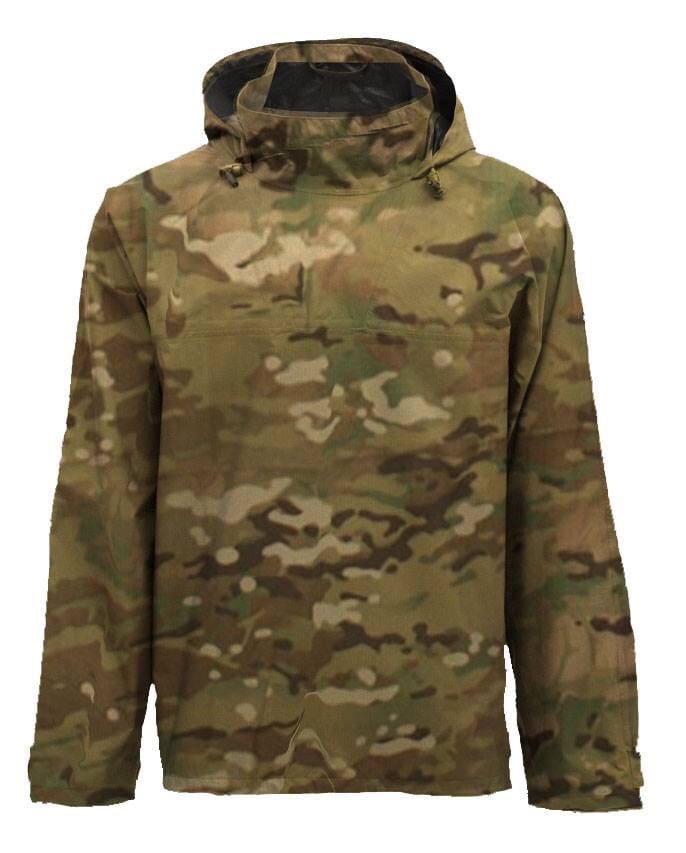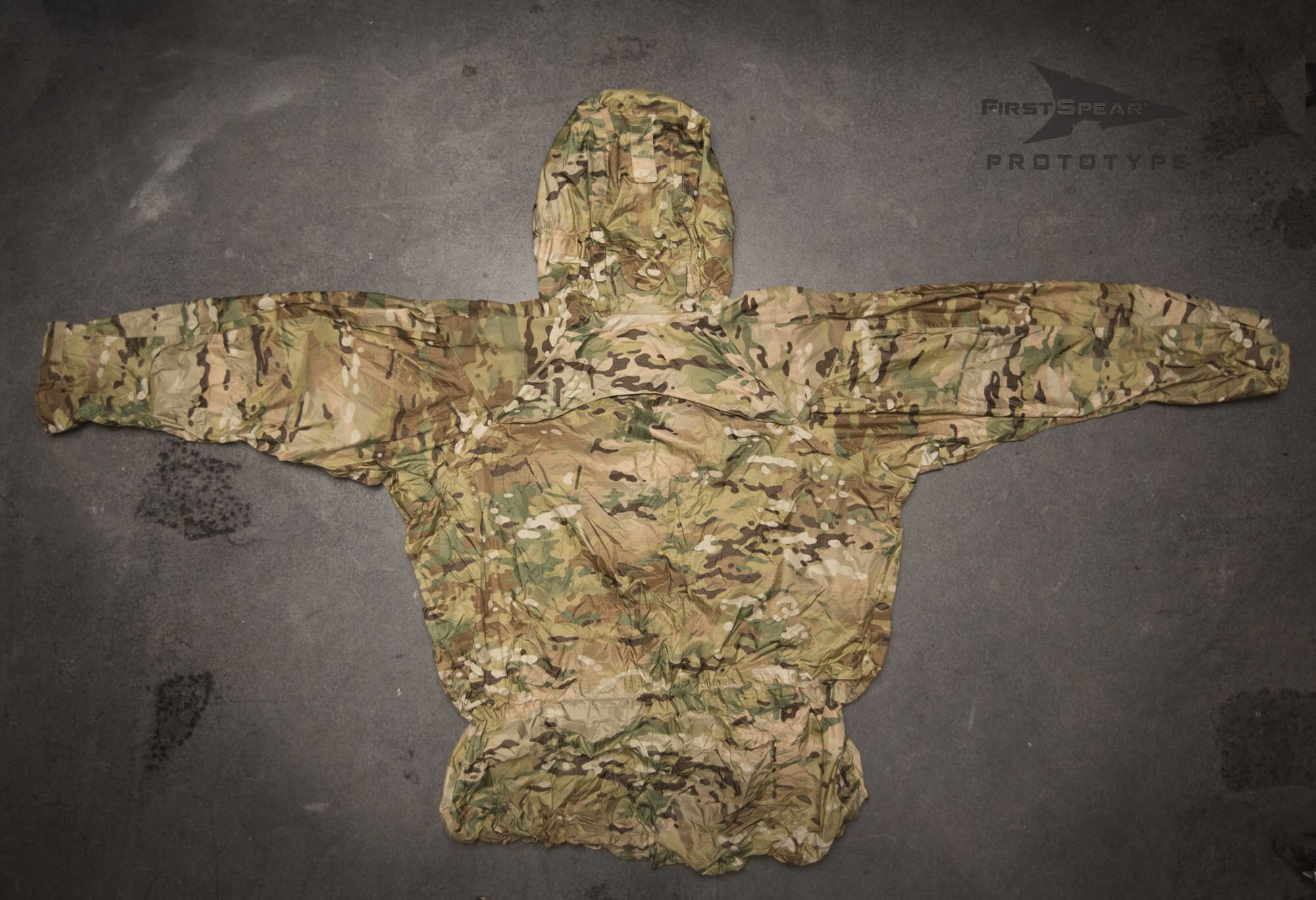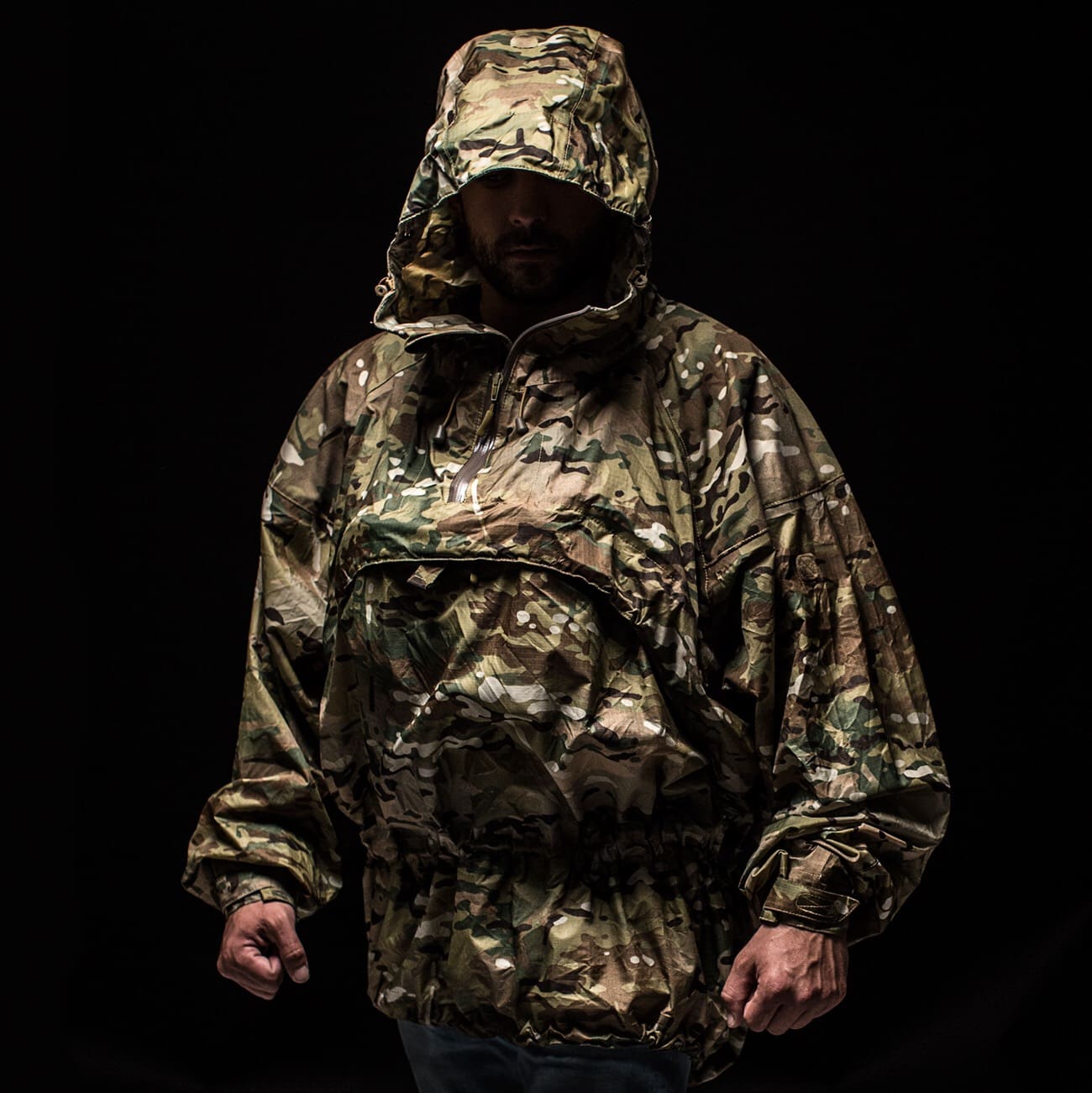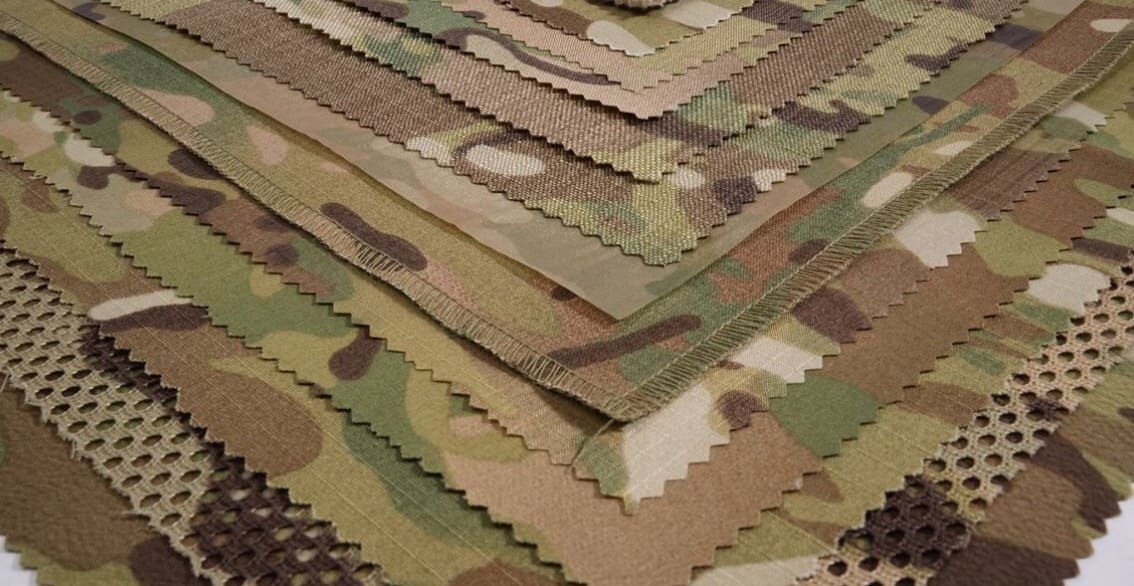During SOFIC we ran into MMI Textiles and they told us they had secured a license to print MultiCam webbing.
One of the things I like about their printed webbing is that the edges aren’t white.
www.mmitextiles.com/product-lines/webbing-and-tape
During SOFIC we ran into MMI Textiles and they told us they had secured a license to print MultiCam webbing.
One of the things I like about their printed webbing is that the edges aren’t white.
www.mmitextiles.com/product-lines/webbing-and-tape
Team MultiCam® has always been about relationships and common interests. Our brand ambassadors are respected in their fields, passionate about what they do and stand behind MultiCam®. From motorsports to competitive shooters, civilian to military, they are a diverse group. They believe in MultiCam® and represent us proudly.
This year the team has grown to include off-road racing legend Ricky Johnson, veterans and motorcycle racers Luie Zendejas and JD Potynsky, veteran/pro-fisherman Jamey Caldwell and veteran/off-road racer Jeff Benrud. They, along with current members Jeff Provenzano, Luke Johnson, Mark Llano, Kyle Defoor, and Travis Gibson, share a desire to give back to our nation’s service members, and we are excited to announce the 2016 Team MultiCam® Military Charity Initiative.
Each team member is supporting a military charity of their choosing. The 10 members will be collectively representing the Special Operations Warrior Foundation, the Navy SEAL Foundation, the Boot Campaign and Mission 22. All these organizations are doing great work to help disabled veterans and their families offset the often high price they have had to pay to serve their country. The Team MultiCam® brand ambassadors will be working hard to bring awareness to these issues and hope to raise as much money as possible so that these charities can better assist the men and women of our armed forces. Please, help them by visiting their GoFundMe pages, spreading the word and donating today. Thank you.
Luke Johnson:
supporting the Special Operations Warrior Foundation: www.gofundme.com/LJTeamMC
Ricky Johnson:
supporting the Special Operations Warrior Foundation: www.gofundme.com/RJTeamMC
Kyle Defoor:
supporting the Navy SEAL Foundation: www.gofundme.com/KDTeamMC
JD Potynsky:
supporting Mission 22: www.gofundme.com/JD-TeamMC
Luie Zendejas:
supporting the Special Operations Warrior Foundation: www.gofundme.com/LZTeamMC
Mark Llano:
supporting the Boot Campaign: www.gofundme.com/MLTeamMC
Jeff Provenzano:
supporting the Navy SEAL Foundation: www.gofundme.com/JPTeamMC
Travis Gibson:
supporting the Special Operations Warrior Foundation: www.gofundme.com/TGTeamMC
Jeff Benrud:
supporting the Special Operations Warrior Foundation: www.gofundme.com/JBTeamMC
Jamey Caldwell:
supporting the Special Operations Warrior Foundation: www.gofundme.com/JCTeamMC

The Carinthia Survival Gore-Tex rainsuit is pretty popular for it’s small size and great breathability. Thanks to an Australian customer, the factory has agreed to doing a run of them in MultiCam. This is really a limited thing and they are only doing a few extra.
Go to www.coolkit.com.au/multicam-survival-rainsuit and put in your order. Delivery is expected mid-July.
Thier site isn’t set up for overseas sales. Email them and they’ll advise you of postage and the price less tax.
On Friday, 22 April, 2016, Federal Judge Denise L. Cote published a ruling, granting Duro Textiles motion for summary judgement and dismissing with prejudice Crye Precision’s remaining claims against Duro Textiles, stemming from a lawsuit filed against Duro in early 2015. This is actually a second lawsuit although the initial suit was filed in late 2014 and withdrawn in early 2015.
Specifically, the Judge dismissed three specific allegations in this suit; breach of contract, trade dress infringement and common law unfair competition arising from Duro’s printing of a camouflage pattern owned by the US Government.
Crye Precision’s MultiCam licensing agreement was central to their claims against Duro. Duro last signed such an agreement with Crye in 2012 and once it had expired in 2014, and Duro began printing the Army’s OCP, legal actions commenced.
Below is the paragraph 3(h), in question.
According to New York law, this clause from the 2012 agreement is unenforceable due to reasons stipulated in the ruling. Furthermore, the judge ruled that it was too broad in scope. At face value, it seems like a pretty straightforward ruling by the court, until you consider that it could create a situation where the premise it is based upon fundamentally changes. The full order, seen below, is quite detailed and worth the read.
To be sure, this is a victory for Duro, but perhaps a bittersweet one. Duro was essentially a lone horse in printing OCP for the Army. Now, they are sure to see competition for this business in the future. What’s more, the Army may well lose control of the pattern it created for use in place of MultiCam. Whether the Army likes it or not, we may see commercial OCP, or really close copies, by Christmas.
Here’s why. Much to the chagrin of those of us watching from the sidelines, the Judge’s decision does not declare whether MultiCam and OCP (Scorpion W2) are similar. Rather, the court is very clear that Duro is just printing what the Army paid them to print; namely, OCP and claims that the government can tell the difference.
Judge Cote dismissed Crye Precision’s claim of trade dress infringement. The court’s ruling may well have set creating about an interesting situation. Consider this:
The Government is the creator and only purchaser of Scorpion W2. It is a sophisticated consumer, as its creation of Scorpion W2 and its announced switch from MUTLICAM in 2014 evidences. Duro’s only sales of Scorpion W2 have been for the Government, specifically to Government contractors and subcontractors in the supply chain for the U.S. Army. These contractors order Scorpion W2 from Duro by name. Thus, while MULTICAM and Scorpion W2 compete in the same Government sales market, there is no likelihood of actual confusion on the part of the Government or its contractors.
It’s the second and third order, or should I say “disorder” effects that will be interesting. For example, what if the consumer is no longer just the US Army but also commercial customers. Could that expanded consumer group tell the difference between these two patterns?
This exact situation may be additional fallout from this ruling, and it may not just affect Crye Precision. By declaring the competition clause of Crye’s licensing agreement void, could printers, licensed or not, begin to make counterfeit versions of MultiCam, or for that matter OCP, consequence free?
Although Judge Cote declared the provisions of Crye Precision’s licensing agreement too broad, you have to wonder how specific they would have to be to satisfy the court and protect the pattern(s). As far as I know, current licensees are under a newer 2014 version of the contract which may contain updated language that already addresses the court’s concerns and were signed under different circumstances than the long-standing agreements with Duro. It must be noted that this ruling by Judge Cote is specific to the situation with Duro.
It is yet to be seen whether Crye Precision will appeal the ruling, but it doesn’t stop them from defending their IP on other fronts. Also, although many are concerned with license fees for the printing of both MultiCam and OCP. This ruling doesn’t address them. Regardless, the bottom line here is that Crye is going to have to sue the US Army if it wants to ultimately settle the MultiCam vs OCP question. We’ll keep you posted if we hear anything.
In this week’s Friday Focus we’ll show you a rare run of MultiCam versions of their Combat Anorak.
With the same features as their solid color Combat Anoraks, these MultiCam variants are availsble only in their Non-Stocking Non-Standard section of the website.

This limited run was manufactured as prototypes, but FS currently has no plans of putting them into production. So, it’s first-come, first-served.

Sizes are limited. However, unlike the oversized production model, sizes are true. If you wear a Large, order a Large.
 3/1/16 – 1947, LLC located in Portsmouth, RI USA is pleased to announce a partnership with Tacticaltrim of Berlin Germany.
3/1/16 – 1947, LLC located in Portsmouth, RI USA is pleased to announce a partnership with Tacticaltrim of Berlin Germany.
Tacticaltrim is licensed by 1947, LLC to offer the suite of MULTICAM® fabrics & webbings to EU and EMEA countries. Tacticaltrim will assist EU and EMEA companies with fabric procurement FOB Germany. By handling duties, credit terms, VATS and transportation costs, Tacticaltrim will make the ordering process more efficient for companies located in the before mentioned regions.
Companies are free to contact 1947, LLC directly with pricing, fabric inquiries or any information regarding the MULTICAM® pattern. The Tacticaltrim partnership does not refrain companies from buying directly from 1947, LLC however Tacticaltrim will streamline the purchasing process for EU/EMEA clients.
The MULTICAM® hang-tag and sew-in labels will be fulfilled by Tacticaltrim for these purchase orders.
Please stop by Booth 9-305 at the IWA Outdoor Classic to say hello March 4th – 7th.
Brooklyn, NY – MultiCam, a division of Crye Precision’s camouflage pattern is designed for use in a wide range of conditions, has partnered with renown video production house, Foxhound Productions, to launch a documentary highlighting Team MultiCam member Jeff Benrud’s solo journey as he competed in the 48th SCORE International Baja 1000.
The video, set to launch February 2nd through MultiCam’s youtube channel, tells the story of Benrud’s third Baja 1000 run; with his previous two races having participated as part of a relay team on a dirt bike, this attempt was entirely on his own as a participant in the Ironman division.
Known as the longest point-to-point off-road desert race in North America, the Baja 1000 puts participants through a grueling pursuit, racing for close to 1000 miles through relentless terrain comprised of jagged rocks, loose sand, powdery silt beds, technical hill climbs and even more technical descents – not to mention livestock roaming freely. The Ironman division required riders to take on the burden of the entire race, on their own. No teammates, no rests.
Playing host to 250 competitors, seven in the Ironman class, in vehicles ranging from dirt bikes to high horsepower trophy trucks, participants found themselves managing the added element of danger amongst each other – most notably during the night stages, as the trucks would pass Benrud, at speeds of 120mph in some sections.
Benrud is an Army Special Operation veteran who teaches defensive and offensive driving capabilities to the military special operations community at American Offroad, with his business partner and off-road racing legend, Ricky Johnson (who can also be seen throughout the film). The combination of his military and off-road experience prepared him for the 821.38-mile course; in which he rode his #715x MultiCam® Alpine wrapped Honda CRF450x (which was auctioned off recently at the 2016 SHOT Show; with proceeds benefiting several Special Operations charities).
“There are few people who show as much fortitude, drive and overall conviction as Jeff. Our pride in being able to support him and his efforts is immeasurable,” stated MultiCam® Brand Manager, Ernesto Rodriguez. “Jeff is not only a hero to our country, but he is also one of the toughest men on the planet.”
The film highlights Benrud’s journey throughout the 25-hour race, and follows his emotional finish with blistered hands, a dirt caked face and his support team of his family and friends. Viewers will be taken alongside Benrud, leaving them feeling exhausted and excited as if they were there with him.